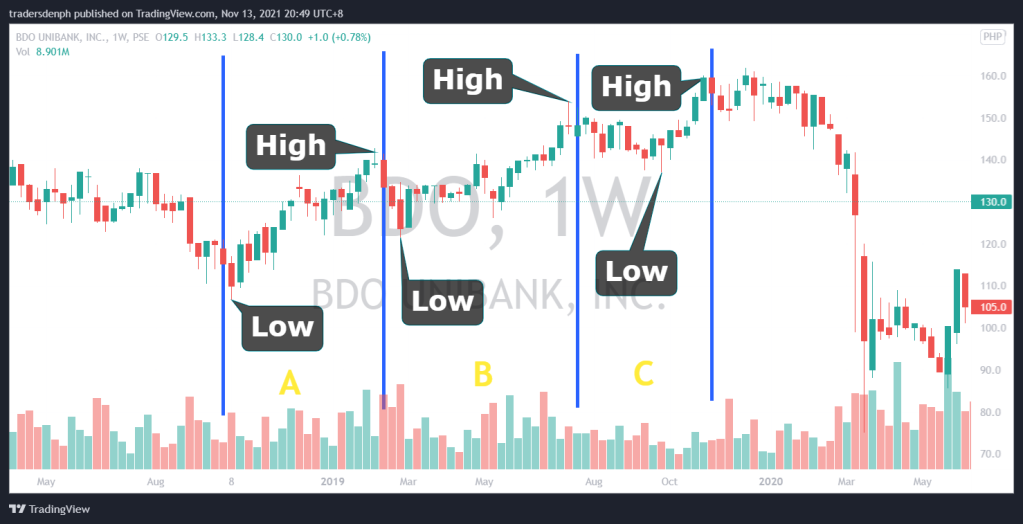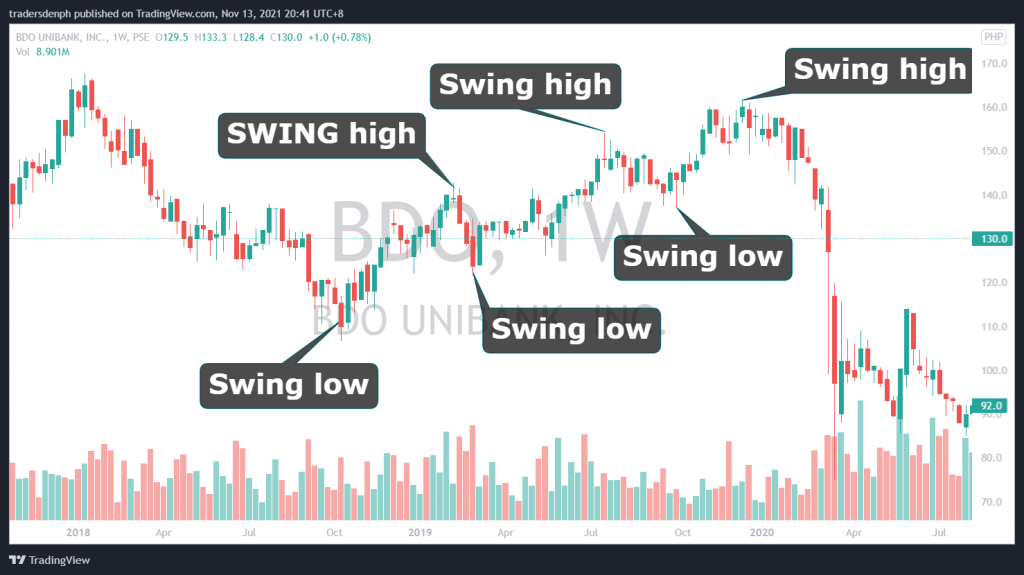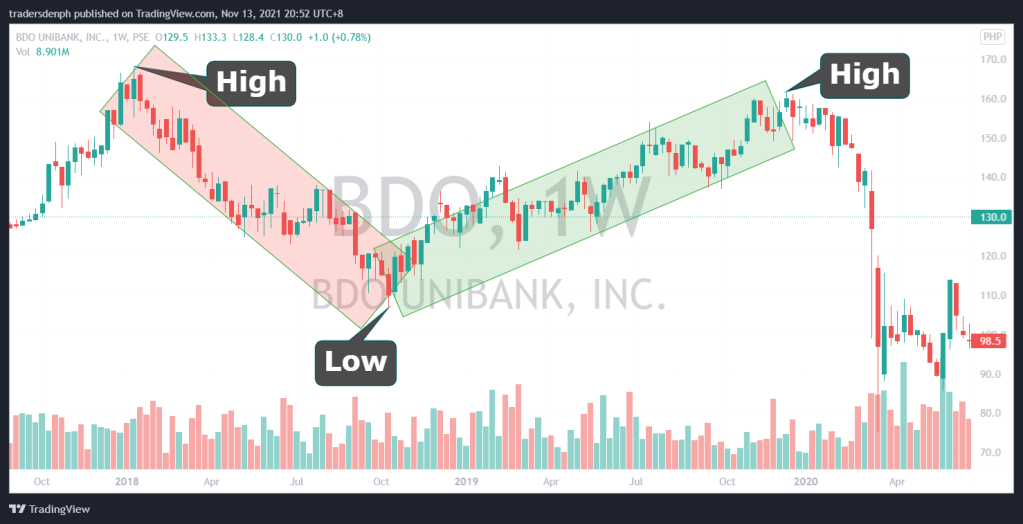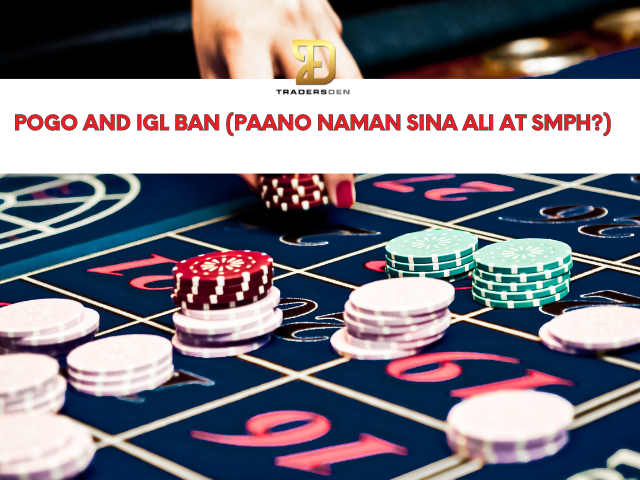
Swing High and Swing Low Explained.
Sa swing high siya”
“Doon sa swing low”
Narinig na ba ninyo yan?
Naconfuse ba kayo what it means?
Let us shed light on it.
WHAT IS SWING HIGH AND SWING LOW?
According sa investopedia, ang swing high ay ” It refers to a peak reached by an indicator or a security’s price before a decline. A swing high forms when the high reached is greater than a given number of highs positioned around it.”
“Swing low is a term used in technical analysis that refers to the troughs reached by a security’s price or an indicator during a given period of time, usually fewer than 20 trading periods. A swing low is created when a low is lower than any other surrounding prices in a given period of time.”
According sa tradingsim, “A swing low is when price makes a low and is immediately followed by two consecutive higher lows. Likewise, a swing high is when price makes a high and is followed by two consecutive lower highs.”
MAKING SENSE OF IT ALL
A swing low is when a price makes a low and is followed by higher lows.
You can’t really call that price low if hindi siya followed by higher price (higher lows).
Diba? Paano mo matatawag yun na low kung yung kasunod niya ay mas low sa kanya?
A swing high is when the price makes a high and is followed by two consecutive lower highs.
You can’t really call it high if hindi siya followed by lower highs.
Diba? Paano mo matatawag na high yun kung yung kasunod niya ay mas high sa kanya?
SA CHART

“In this example, swing highs are marked by the points numbered 1 and 2. The swing low in this illustration is the point marked by the letter B. Letter A is shown for comparison purposes. If a trader were interested in every high and low point in a three-to-four-day period, both of these points would be considered a swing low. For most chart viewers, only point B would be considered the swing low of interest here.”
Well…


Let us try a real example using a real PSE chart.
By the definition of swing high and swing low ay ganito siya.

They are just highs and lows of different periods depende kung aling period ka nakatingin.

If sa period A ka nakatingin ay may low siya at high. Kapag sa B naman meron din. Sa C ay meron din.
Kapag sa A at B ka nakatingin ay maiinvalidate ang high ng A at low ng B unless me bagong definition ka ng low at high. If ang low mo means mababa at high ay mataas then di na valid ang high ng A at low ng B.
Same goes kapag sa B at C ka nakatingin. Invalidate ang high ng B at low ng C.
Kapag sa ABC ka tumingin ay yung low lang ng A at high ng C ang valid.
Ayaw mo maniwala? Sige let me show you what happens pag eh break mo into periods ang trend para mavalidate ang swing high at swing low mo.
Heto yung tama diba?

How about this one?

Tama din diba?
I can even break it up sa much smaller periods like every 4 candles eh may swings ka.
Lows and highs changes as the candle develops.
Yung akala mong low ngayon ay maaaring mapalitan. Yung akala mo na high ngayon ay maaring mapalitan.
You can call it swing lows and swing highs or you can simply call it low or high.
They are both the same depende kung aling part ng chart or period ka nakatingin.
Swing low at swing high are just lows and highs on certain periods sa isang trend.
If sa live trading ay hindsight na siya. Di mo alam na low na yun unless me next candles ka na mas higher. Di mo alam na high na yun unless may next candle ka na lower.
Ang simplest explanation ng swing low at high ay any temporary lows or highs sa loob ng isang trend.
Temporary kasi sa isang trend ay ultimately meron lamang isang low which is simula ng uptrend (lowest part) or end ng downtrend at isang high na end ng uptrend or simula ng downtrend.

If nag enjoy ka at naglearn sa paliwanag na ganito, I bet mas lalo ka mag eenjoy at maglelearn kapag mismong Fibonacci Retracement na ang tinalakay ko.
Come join us sa upcoming course! Never miss it! Fibonacci Retracement Course!
Introducing IDYOTT 2.0: ELEVATE.
If nagustuhan niyo ang IDYOTT/ You will love this book more.
Level up your trading skills with Elevate.



You May Also Like

POGO And IGL BAN (Paano Naman Sina ALI At SMPH?)
July 25, 2024
OFW Na Naghahanap Ng Sideline Income Ay Naging Successful Trader!
November 29, 2023

